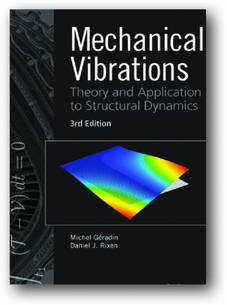
The third edition of Mechanical Vibrations: Theory and Application to Structural Dynamics by Geradin and Rixen is a comprehensive book which fills a gap between a monograph and a textbook.
It comprises of seven chapters, each with a separate notation (called, in the book, definitions) and a list of references, which are mainly textbooks and major treatises. It has a flavour of seven advanced courses focused on structural dynamics, which are interconnected but can function on their own.
Each chapter has a thorough introduction to the theory needed to build foundations followed by examples and problems. The depth of treatment is commendable but perhaps the structure would benefit from moving Chapter 7 on direct numerical integration methods to be the second chapter or even the first one, as further chapters need direct numerical integration.
The first chapter ‘Analytical Dynamics of Discrete Systems’ has a nonlinear flavour and equips the reader with the basic concepts and tools to derive equations of motion. The subsequent chapters gradually build the complexity by compressively covering the undamped and damped vibration of large dimensional systems, dynamics of continuous systems and methods for eigenvalue problems. The book is closed with a chapter entitled, ‘Direct Time-Integration Methods’, which is one of the best descriptions of the topic in the engineering dynamics literature.
The complementary expertise of the authors benefits the book as the analytical mechanics blends well with the Finite Element Method, which I believe is the main strength of this volume for structural dynamics. The title is a bit misleading as there is not enough covered problems from mechanical engineering to give the main title as Mechanical Vibrations. I think, Structural Dynamics: Theory and Applications would work better. Also, the book would benefit having clearly spelled out scope and target readership. However, these minor misgivings and the authors need to be congratulated for this fine addition to the structural dynamics literature.

